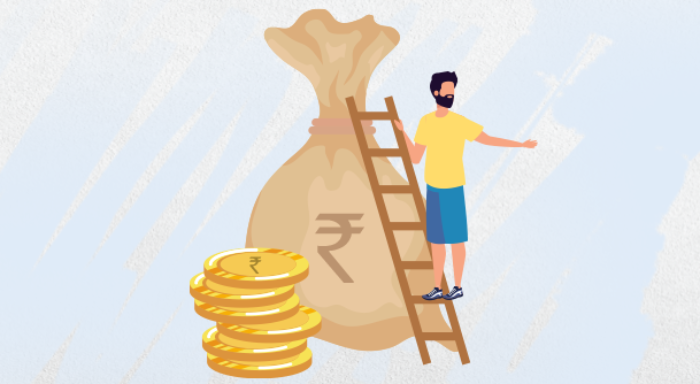Step-by-step guide to managing your finances
Blog Title
317 |
When you just start earning you think of buying the latest gadgets, spending it on weekends, new movies, trips, shopping, etc.
But when more than half of your salary is spent, that’s when you start to think about saving and investment. The thought then crosses, what do you do with the money? How do you manage to make it last?
Here’s an easy step-by-step guide to manage your finances:
Step 1: Secure your present
Whether it is about life or money, it’s always important to protect your base first. In this case, your life and health.
Life or health problems can burn a hole in your pocket:
- 25-year-old Suraj met with a bike accident. He is now paralyzed waist down. He used to earn Rs 80,000 every month. Now he’s entirely dependent on his spouse’s earnings.
- 35-year-old Madhav used to earn as much as Rs 1 lakh every month. He had a great amount of savings to be used for buying a house of his own. However, barely a month before he made the down payment, Madhav was diagnosed with chronic kidney disorder. He had to quit his job and the treatments exhausted all his savings.
This is why it’s important to first protect your family and yourself with a comprehensive term insurance. In both the above cases, a comprehensive term insurance could have come to the rescue—to provide both a regular source of income and to take care of the medical expenses.
Step 2: Save tax
The next step is opting for tax saving investments. After all, there’s no point in earning higher amounts if you are paying huge taxes. Plus, investing to save tax serves a dual purpose—it helps you increase your wealth for the future and also save on taxes.
You can invest a maximum of Rs 1.5 lakh every year under section 80c. That means, over a span of 25-30 years, you can save up to Rs 35-45 lakh. That’s your saving alone.
Now, let’s assume you earn a 15% interest every year. Over a period of 20 years, you will accumulate Rs 1.9 cr. This money can easily be used for future goals like down-payment for a new house, your retirement fund, child’s education, etc.
That’s why, before you undertake any other saving or investment activity, start investing to save tax. Remember, the earlier you start, the higher your returns can be.
Step 3: Prepare for the future
Once you’ve taken care of your present, it’s time to jot down all your life goals. Next, add a timeline for each and the amount it would cost you. Then, figure out how much you need to save for each goal. You can assign your tax-saving investment plans for these goals too. You can always save/invest more when your salary increases.
Money management sounds difficult and strenuous. But once you start, it can seem quite easy.
Aastha Mestry - Portfolio Manager
An Author and a Full-Time Portfolio Manager, Aastha has 6 years of experience working in the Insurance Industry with businesses globally. With a profound interest in traveling, Aastha also loves to blog in her free time.









